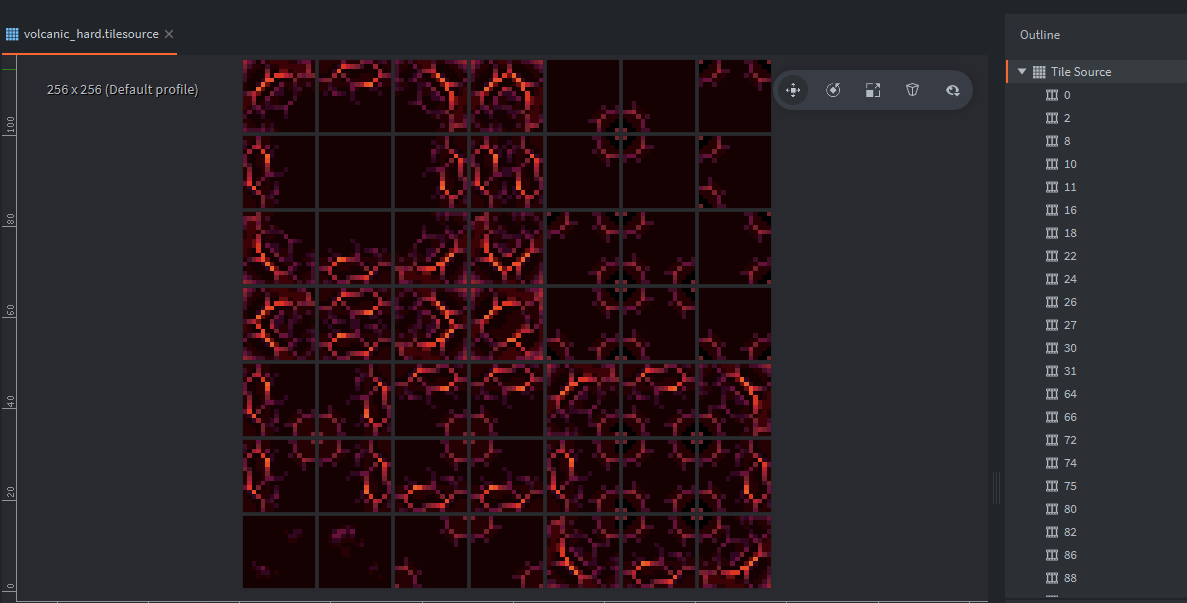Thank you for the wishlist!
No!
Each block is a game object → sprite → tilesource. This is so that I can apply auto-tiling.
Here’s what a tilesource looks like:
Each animation in the tilesource corresponds to a bitmask. I used this excellent guide to figure out how to use bitmasking for auto-tiling.
Happy to share more if people have any questions about the project.
